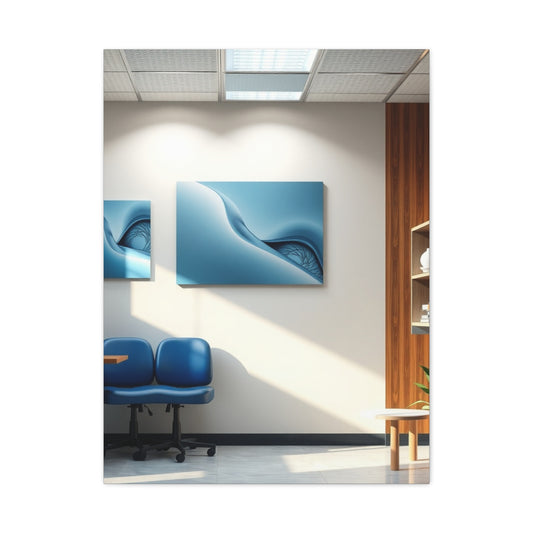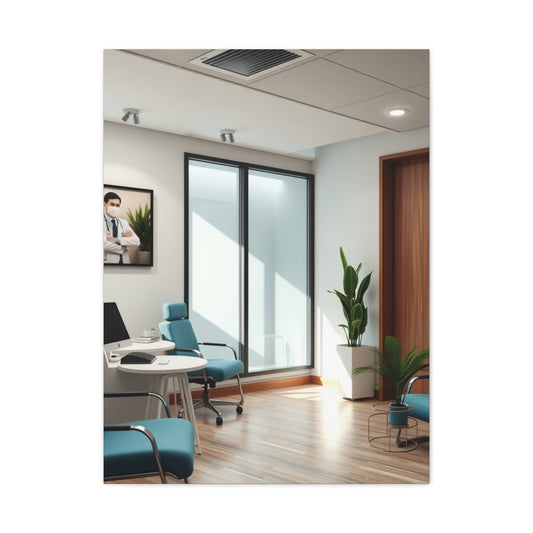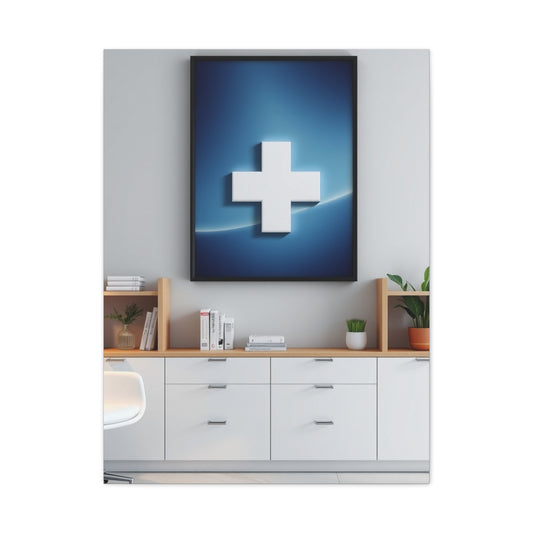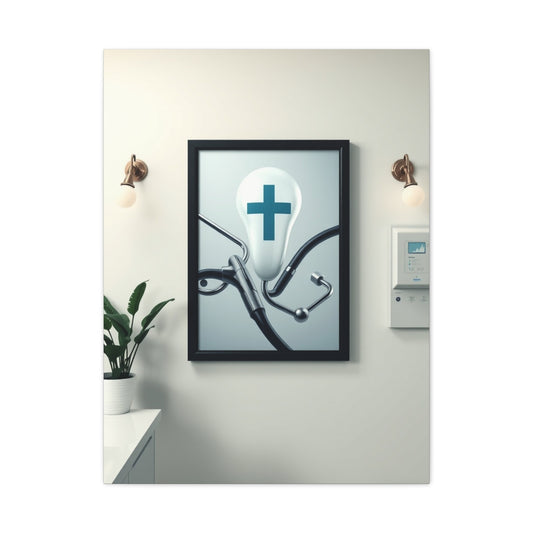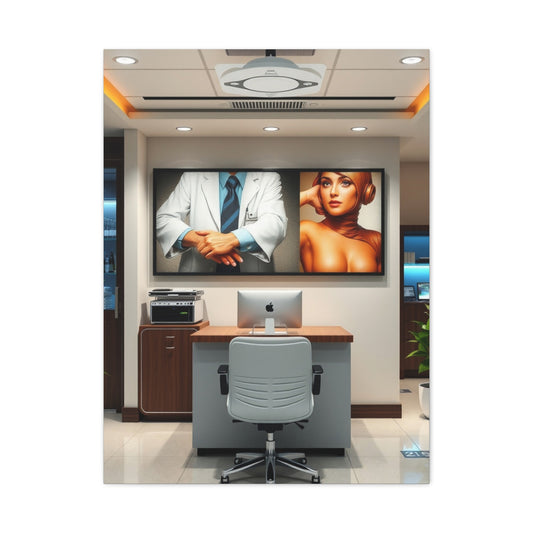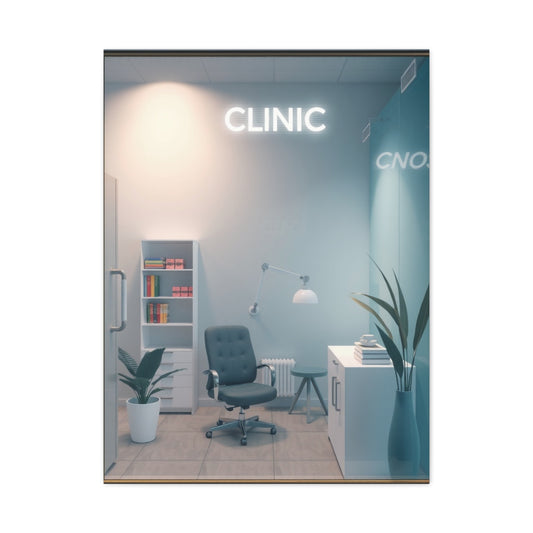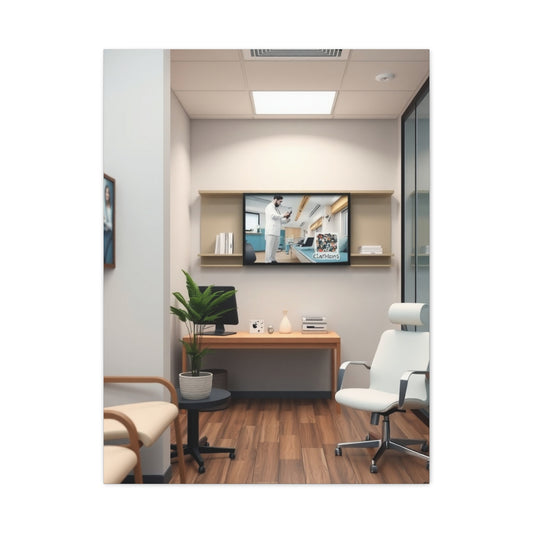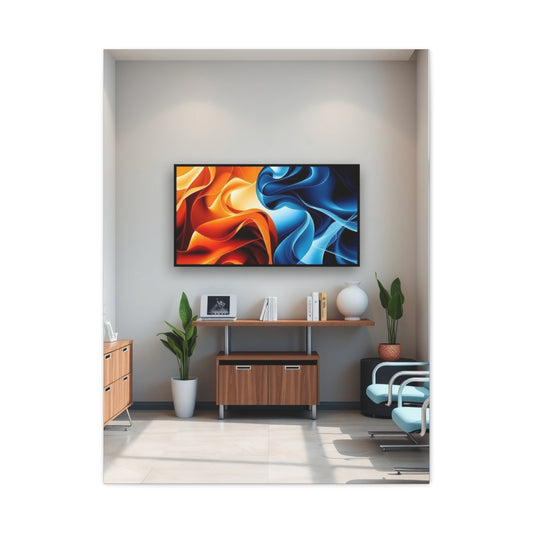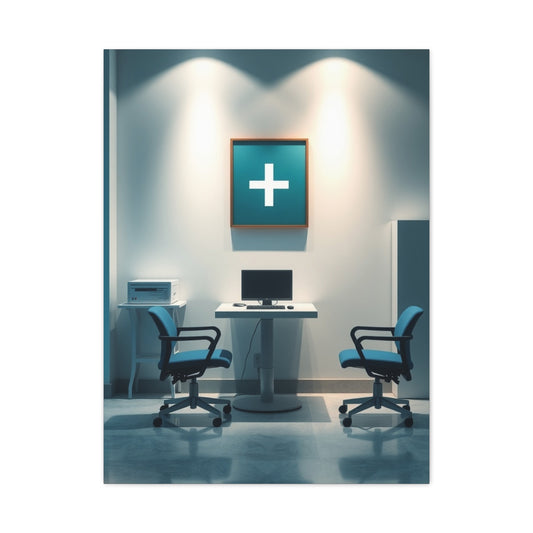-
Clinic Office Decor Art Luxury Canvas Wall Art & Canvas Print
Regular price From $141.23 USDRegular priceUnit price per -
Clinic Office Decor Art Supreme Canvas Wall Art & Canvas Print
Regular price From $141.23 USDRegular priceUnit price per -
Clinic Office Decor Art Refined Canvas Wall Art & Canvas Print
Regular price From $141.23 USDRegular priceUnit price per -
Elite Clinic Office Decor Art Vision Wall Art & Canvas Print
Regular price From $141.23 USDRegular priceUnit price per -
Collection Clinic Office Decor Art Art Wall Art & Canvas Print
Regular price From $141.23 USDRegular priceUnit price per -
Supreme Clinic Office Decor Art Collection Wall Art & Canvas Print
Regular price From $141.23 USDRegular priceUnit price per -
Clinic Office Decor Art Supreme Gallery Wall Art & Canvas Print
Regular price From $141.23 USDRegular priceUnit price per -
Masterpiece Clinic Office Decor Art Vision Wall Art & Canvas Print
Regular price From $141.23 USDRegular priceUnit price per -
Vision Clinic Office Decor Art Art Wall Art & Canvas Print
Regular price From $141.23 USDRegular priceUnit price per
Clinic Wall Art for Doctors Office Decor Ideas to Elevate Your Medical Practice
The healthcare industry has undergone a remarkable transformation in recent decades, with practitioners increasingly recognizing the significance of environmental design in patient outcomes and overall wellbeing. The traditional sterile, clinical atmosphere that once characterized medical facilities is giving way to more thoughtful, patient-centered spaces that prioritize comfort, healing, and emotional support. Within this paradigm shift, the role of carefully selected wall art emerges as a cornerstone element in creating therapeutic environments that serve both patients and healthcare providers.
Medical professionals today understand that the visual environment plays a crucial role in patient psychology and healing processes. Research consistently demonstrates that well-designed healthcare spaces can reduce anxiety, lower blood pressure, decrease pain perception, and even accelerate recovery times. The strategic placement of appropriate wall art serves as more than mere decoration; it functions as a therapeutic tool that can significantly enhance the patient experience while supporting the professional atmosphere that healthcare providers require.
The selection of wall art for medical facilities involves careful consideration of multiple factors, including patient demographics, cultural sensitivities, color psychology, and the specific nature of medical services provided. Unlike residential or commercial spaces, healthcare environments demand artwork that maintains professional standards while offering emotional comfort and visual interest. This delicate balance requires thoughtful curation and an understanding of how different artistic elements interact with the clinical environment.
Contemporary healthcare design principles emphasize the importance of creating spaces that feel welcoming and humanized rather than institutional. Wall art serves as a primary vehicle for achieving this transformation, offering patients visual respite from clinical equipment and sterile surfaces. The right artwork can create focal points that draw attention away from medical instruments, provide conversation starters between patients and staff, and establish a sense of place that feels more like a healing sanctuary than a medical facility.
Comprehensive Benefits of Thoughtfully Selected Medical Office Artwork
The integration of carefully chosen wall art into healthcare environments yields multifaceted benefits that extend far beyond aesthetic enhancement. From a psychological perspective, appropriate artwork can significantly reduce patient anxiety and stress levels, which are common experiences when visiting medical facilities. Studies have shown that patients exposed to calming, nature-inspired imagery experience measurable reductions in cortisol levels and reported stress indicators compared to those in environments lacking visual stimulation.
Patient satisfaction scores consistently improve in healthcare facilities that incorporate thoughtful design elements, including wall art. This improvement in patient experience translates to practical benefits for medical practices, including increased patient retention, positive reviews, and word-of-mouth referrals. Satisfied patients are more likely to follow treatment recommendations, maintain regular appointments, and develop long-term relationships with their healthcare providers.
From a staff perspective, working in visually appealing environments contributes to job satisfaction and professional pride. Healthcare workers spend considerable time in these spaces, and the presence of thoughtful artwork can help combat the emotional challenges associated with medical practice. Beautiful, inspiring visual elements can serve as brief moments of respite during demanding workdays, contributing to overall workplace wellbeing and potentially reducing burnout rates among healthcare professionals.
The presence of appropriate wall art also supports the professional image of medical practices. Patients often form impressions about the quality of care they will receive based on the visual presentation of healthcare facilities. Well-curated artwork communicates attention to detail, investment in patient experience, and a commitment to creating healing environments. These impressions can influence patient confidence in their healthcare providers and contribute to positive therapeutic relationships.
Furthermore, wall art can serve practical functions beyond aesthetic enhancement. Strategically placed artwork can help with wayfinding in larger medical facilities, create visual landmarks that assist patients in navigating spaces, and establish distinct identities for different departments or service areas. This functional aspect of wall art contributes to operational efficiency while maintaining the primary goal of creating comfortable, welcoming environments.
Exploring Nature-Inspired Themes for Healthcare Environments
Nature-inspired wall art represents one of the most universally effective categories for healthcare environments, drawing on humanity's innate connection to the natural world to promote healing and wellbeing. This approach, known as biophilic design, recognizes that humans have an evolutionary affinity for nature and that exposure to natural imagery can trigger physiological and psychological responses that support health and healing.
Botanical themes offer particularly versatile options for medical office decor, as they can complement a wide range of interior design styles while maintaining universal appeal across diverse patient populations. Floral imagery, when selected thoughtfully, provides color and visual interest without being overly stimulating or culturally specific. Gardens, forests, and meadow scenes create sense of tranquility and escape that can be particularly valuable for patients experiencing stress or anxiety about medical procedures.
Water elements in artwork, such as peaceful streams, lakeshores, or ocean scenes, tap into the psychological associations humans have with water and renewal. The visual representation of flowing water can create a sense of movement and life within static healthcare environments, while the calming blue and green tones commonly associated with water scenes promote relaxation and peace. These images work particularly well in waiting areas where patients may spend extended periods anticipating appointments.
Landscape photography and paintings offer opportunities to bring expansive natural vistas into confined healthcare spaces, creating psychological space expansion that can help patients feel less claustrophobic or confined. Mountain ranges, rolling hills, and open fields provide visual depth and can serve as mental escape routes for patients dealing with health concerns or uncomfortable medical procedures.
Seasonal nature themes allow healthcare facilities to maintain visual interest throughout the year while connecting patients to the natural rhythms of the outside world. Spring imagery with budding trees and emerging flowers can symbolize renewal and hope, while autumn scenes with changing leaves can provide warmth and comfort during colder months. This rotation of seasonal themes keeps the healthcare environment fresh and dynamic.
Mastering Color Facility Design
The psychological impact of color in healthcare environments cannot be overstated, as different colors trigger distinct emotional and physiological responses that can either support or hinder the healing process. Understanding color psychology becomes essential when selecting wall art for medical facilities, as the chosen palette will influence patient mood, stress levels, and overall comfort throughout their healthcare experience.
Blue tones consistently rank among the most effective colors for healthcare environments due to their association with calm, trust, and reliability. Lighter blues can create a sense of openness and tranquility, while deeper blue tones convey professionalism and stability. Blue has been shown to have measurable effects on blood pressure and heart rate, often producing calming physiological responses that benefit anxious patients. When incorporated into wall art, blue tones work particularly well in waiting areas and consultation rooms where patients need to feel relaxed and trusting.
Green represents another powerful color choice for medical environments, drawing on its associations with nature, growth, and healing. The human eye processes green wavelengths with less strain than other colors, making it an excellent choice for spaces where patients may spend extended periods. Green artwork can range from soft, sage tones that promote tranquility to more vibrant emerald shades that energize without overwhelming. This color family works exceptionally well in pediatric environments, rehabilitation centers, and mental health facilities.
Warm colors such as soft yellows, peaches, and corals can add welcoming energy to healthcare spaces without creating overstimulation. These colors can counteract the coldness often associated with medical equipment and sterile surfaces, creating environments that feel more inviting and human-centered. However, warm colors require careful application in healthcare settings, as overly bright or saturated warm tones can increase anxiety or agitation in some patients.
Purple and lavender tones offer sophisticated options for healthcare wall art, particularly in spaces serving adult populations or specialized medical services. These colors combine the calming properties of blue with the warmth of red, creating balanced emotional responses that can work well in consultation rooms or private treatment areas. Lighter purple tones are associated with creativity and healing, while deeper purples convey luxury and expertise.
Strategic Artwork Placement Throughout Medical Facilities
The placement of wall art within medical facilities requires careful consideration of patient flow, functional requirements, and the specific psychological needs of different spaces. Each area within a healthcare facility serves distinct purposes and presents unique opportunities for artistic enhancement that supports both patient comfort and operational efficiency.
Waiting areas represent perhaps the most critical spaces for wall art placement, as patients often spend considerable time in these areas while experiencing heightened anxiety about upcoming appointments or procedures. Large-scale artwork can serve as focal points that provide visual interest and distraction from health concerns, while smaller pieces can create intimate viewing experiences for individual patients. The placement height should accommodate both seated and standing patients, with eye-level positioning being crucial for maximum impact.
Reception and front desk areas benefit from welcoming artwork that establishes the tone for the entire healthcare experience. These pieces should balance professionalism with warmth, creating positive first impressions while reflecting the values and personality of the medical practice. The artwork in these areas often becomes associated with the practice's brand identity, making thoughtful selection particularly important for long-term patient relationships.
Examination rooms present unique challenges and opportunities for wall art placement. Pieces should be positioned where patients can view them during procedures or consultations, providing distraction and comfort during potentially uncomfortable moments. The scale should be appropriate for intimate spaces without overwhelming the room or interfering with medical equipment. Calming, abstract pieces often work well in these settings, avoiding detailed imagery that might distract patients from important medical communications.
Hallways and corridors offer opportunities for sequential artwork experiences that can guide patients through facilities while providing visual interest during transitions between spaces. These areas can accommodate series of related pieces that tell visual stories or maintain thematic continuity throughout the facility. The placement should consider lighting conditions and viewing angles from various distances as patients move through these spaces.
Private offices and consultation rooms allow for more personalized artwork selections that reflect individual healthcare providers' personalities while maintaining professional standards. These pieces can serve as conversation starters and help establish rapport between patients and providers. The selection process should consider the specific medical specialty and patient populations served, ensuring appropriateness and relevance.
Selecting Appropriate Sizes and Formats for Healthcare Artwork
The scale and format of wall art in healthcare environments significantly impact both visual effectiveness and practical functionality within medical facilities. Understanding the relationship between artwork size, viewing distance, and spatial context becomes essential for creating impactful visual experiences that support patient comfort and operational efficiency.
Large-scale artwork, typically ranging from 30 to 60 inches or larger, works exceptionally well in waiting areas, lobbies, and other spaces where patients may be seated at various distances from the walls. These pieces can serve as commanding focal points that draw attention away from clinical equipment or institutional features. The visual weight of large artwork can help balance the scale of medical furniture and equipment while creating sense of importance and investment in patient experience.
Medium-sized pieces, generally between 16 to 30 inches, offer versatility for various healthcare spaces and can be used individually or in groupings to create visual interest. These sizes work particularly well in examination rooms, consultation offices, and smaller waiting areas where intimate viewing experiences are desired. The moderate scale allows for detailed imagery without overwhelming confined spaces or competing with necessary medical equipment.
Small artwork, under 16 inches, provides opportunities for personal touches and detail work that can be appreciated at close viewing distances. These pieces work well in private offices, treatment rooms, and areas where patients may be in close proximity to walls during procedures. Small artwork can also be used in series to create gallery walls or thematic groupings that add visual richness to healthcare environments.
The format choice between horizontal, vertical, and square orientations should consider both the architectural features of the space and the intended viewing experience. Horizontal formats can help expand the perceived width of narrow corridors or small rooms, while vertical pieces can add height to spaces with low ceilings. Square formats offer balanced compositions that work well in various spatial contexts.
Diptychs, triptychs, and other multi-panel formats provide opportunities for creating expansive visual experiences even in spaces with architectural constraints such as doorways, windows, or medical equipment. These formats allow for creative storytelling through sequential imagery and can accommodate irregular wall spaces that might not suit single large pieces.
Understanding Print Quality and Materials
The selection of appropriate print materials and production methods for healthcare artwork requires consideration of the unique environmental demands of medical facilities, including cleaning requirements, durability needs, and safety considerations. Healthcare environments present challenges that differ significantly from residential or commercial spaces, necessitating careful attention to material specifications and production quality.
Archival giclée printing represents the gold standard for healthcare artwork, offering exceptional color accuracy, longevity, and resistance to fading. This printing method uses pigment-based inks that maintain color stability over decades, ensuring that artwork investments continue to provide value throughout their installation lifespan. The archival quality becomes particularly important in healthcare settings where artwork replacement frequency should be minimized to maintain budget efficiency.
Canvas prints provide texture and visual interest while offering practical advantages for healthcare environments. Gallery-wrapped canvas eliminates the need for traditional framing, reducing dust collection points and simplifying cleaning procedures. The fabric surface is less reflective than paper or other materials, reducing glare issues that could interfere with patient comfort or medical procedures. Canvas prints can also withstand the temperature and humidity variations common in healthcare facilities.
Metal prints offer exceptional durability and unique aesthetic qualities that can complement contemporary healthcare design. The aluminum substrate provides superior resistance to moisture, temperature fluctuations, and cleaning chemicals commonly used in medical facilities. The luminous quality of metal prints can add vibrancy to colors while maintaining professional appearance. These prints work particularly well in high-traffic areas or spaces requiring frequent sanitization.
Acrylic prints create contemporary, high-end appearances that align with modern healthcare facility design trends. The acrylic surface provides depth and luminosity while offering excellent resistance to impact and environmental factors. These prints maintain sharp detail and color saturation while being relatively easy to clean and maintain. The sleek appearance can complement high-tech medical equipment and contemporary architecture.
Fine art paper prints require protective framing but offer the highest level of detail reproduction and color accuracy. When properly framed with UV-protective glazing and appropriate matting, paper prints can provide museum-quality presentations suitable for executive areas, private offices, and spaces where artwork serves as significant design elements. The framing process allows for customization of presentation style to match interior design themes.
Framing Solutions and Mounting
The selection of appropriate framing and mounting solutions for healthcare artwork involves balancing aesthetic preferences with practical requirements unique to medical environments. Safety considerations, cleaning protocols, and durability requirements all influence the choice of framing systems and mounting hardware for healthcare applications.
Traditional framing with glass or acrylic glazing provides maximum protection for artwork while allowing for customization of mat colors and frame styles to complement interior design themes. However, healthcare environments require careful consideration of glass type, with tempered or laminated options being preferable for safety reasons. The frame construction should accommodate frequent cleaning and potential impact from mobile equipment or patient movement.
Frameless mounting systems offer contemporary aesthetics while simplifying maintenance requirements in healthcare settings. Float mounting allows artwork to appear suspended within frames, creating modern presentations that complement contemporary healthcare design. These systems reduce dust accumulation points while maintaining professional appearances suitable for medical facilities.
Gallery rail systems provide flexibility for artwork rotation and seasonal changes without requiring multiple wall penetrations. These systems support various hanging methods and can accommodate different artwork sizes and weights. The ability to easily change displays allows healthcare facilities to maintain visual freshness and respond to patient feedback or seasonal preferences.
Magnetic mounting systems designed for healthcare applications offer tool-free artwork changes while maintaining secure installation. These systems work particularly well with metal prints and can simplify the process of updating displays or rotating artwork collections. The magnetic hardware eliminates the need for traditional picture hanging hardware that could collect dust or require cleaning.
Security mounting becomes important in healthcare environments, particularly in areas with vulnerable populations or high-traffic spaces. Anti-theft hardware and tamper-resistant mounting systems help protect artwork investments while maintaining professional presentations. These systems should balance security requirements with the need for periodic artwork maintenance and cleaning.
Specialized Considerations
Various medical specialties present unique considerations for wall art selection, requiring tailored approaches that address specific patient populations, treatment contexts, and professional requirements. Understanding these specialty-specific needs enables healthcare providers to select artwork that maximizes therapeutic benefit while supporting professional practice goals.
Pediatric healthcare environments require artwork that appeals to young patients while avoiding overstimulation or frightening imagery. Soft, whimsical designs featuring friendly animals, gentle landscapes, or abstract patterns in soothing colors can help create welcoming environments for children and their families. The artwork should be positioned at appropriate heights for child viewing and should avoid detailed imagery that might be misinterpreted by young, anxious patients.
Mental health facilities benefit from artwork that promotes calm reflection and positive emotional responses. Abstract compositions, gentle landscapes, and uplifting imagery can support therapeutic goals while avoiding potentially triggering content. The color palette should emphasize calming tones, and imagery should be carefully vetted to ensure appropriateness for patients dealing with various psychological challenges.
Oncology centers require particularly sensitive artwork selection, as patients often face serious health challenges and emotional stress. Hopeful, life-affirming imagery that avoids direct references to illness or mortality can provide emotional support during difficult treatment periods. Nature themes, peaceful abstracts, and inspiring landscapes often work well in these environments.
Orthopedic and rehabilitation facilities can benefit from artwork that subtly suggests movement, progress, and healing without being overly literal. Abstract compositions suggesting flow or growth, landscape imagery showing pathways or journeys, and uplifting color palettes can support patient motivation during recovery processes.
Surgical centers and outpatient procedure facilities require calming artwork that helps reduce pre-procedure anxiety. Serene landscapes, gentle abstracts, and soothing color palettes work well in these environments. The artwork should be positioned where patients can view it during preparation and recovery periods, providing distraction and comfort during vulnerable moments.
Budget Planning and Investment Strategies for Healthcare Artwork
Developing effective budget strategies for healthcare artwork requires balancing initial investment costs with long-term value considerations, maintenance requirements, and the potential return on investment through improved patient satisfaction and facility reputation. Healthcare administrators must consider multiple factors when allocating resources for artwork purchases and installation.
Initial budget planning should account for not only artwork purchase prices but also framing, mounting hardware, professional installation, and potential maintenance costs over the artwork's lifespan. High-quality pieces may require larger initial investments but often provide better long-term value through durability and sustained visual impact. The budget should also consider the potential need for artwork rotation or updates to maintain visual freshness.
Phased implementation strategies allow healthcare facilities to gradually build artwork collections while managing cash flow and assessing patient response to initial installations. Beginning with high-impact areas such as main waiting rooms and reception areas can provide immediate benefits while generating momentum for additional phases. This approach also allows for refinement of selection criteria based on initial patient and staff feedback.
Group purchasing and collection development can provide cost efficiencies while ensuring visual cohesion throughout healthcare facilities. Working with artists or galleries to develop coordinated collections can result in volume discounts while maintaining thematic consistency. This approach works particularly well for multi-location practices or large healthcare systems seeking brand consistency.
Leasing and rental programs offer alternatives to outright purchase for healthcare facilities with limited capital budgets or those preferring flexible artwork rotation. These programs can provide access to higher-quality pieces while spreading costs over time and allowing for periodic collection updates. Some programs include maintenance and replacement services as part of the leasing agreement.
Return on investment considerations should factor in the potential benefits of improved patient satisfaction, increased referrals, and enhanced facility reputation. While these benefits may be difficult to quantify directly, healthcare facilities with thoughtfully designed environments often report higher patient satisfaction scores and positive community perceptions that translate to business value.
Maintenance Protocols and Long-term Preservation
Establishing comprehensive maintenance protocols for healthcare artwork ensures long-term preservation of visual investments while maintaining hygiene standards required in medical environments. These protocols must balance artwork preservation with infection control requirements and facility cleanliness standards.
Regular cleaning schedules should be established based on artwork materials and mounting systems, with different approaches required for various print types and framing configurations. Canvas and metal prints may require different cleaning methods than framed pieces with glass glazing. Staff training on appropriate cleaning techniques helps prevent damage while maintaining appearance standards.
Environmental monitoring becomes important for artwork preservation in healthcare facilities, where temperature and humidity fluctuations from HVAC systems and medical equipment can affect artwork stability. Positioning artwork away from direct air currents, heat sources, and areas with high humidity helps preserve print quality and color stability over time.
Damage assessment and replacement protocols should be established to address inevitable wear, accidental damage, or vandalism that may occur in healthcare environments. Having established relationships with suppliers and understanding replacement timelines helps minimize periods when artwork areas remain empty following damage incidents.
Documentation of artwork installations, including purchase records, installation dates, and maintenance histories, supports both insurance requirements and long-term collection management. Digital photography of installations can aid in replacement or restoration decisions and provide records for insurance claims if needed.
Professional conservation consultation may be warranted for high-value pieces or collections in prestigious healthcare facilities. Understanding when professional intervention is needed versus when in-house maintenance is sufficient helps protect artwork investments while managing maintenance costs effectively.
Emerging Trends in Healthcare Environmental Design
The healthcare design industry continues to evolve, with emerging trends influencing artwork selection and presentation methods in medical facilities. Staying informed about these developments helps healthcare administrators make forward-looking decisions that maintain contemporary relevance and patient appeal.
Biophilic design principles continue gaining prominence in healthcare environments, emphasizing the integration of natural elements and imagery to support patient healing and wellbeing. This trend extends beyond simple nature imagery to include abstract representations of natural patterns, organic shapes, and color palettes inspired by natural environments. The scientific backing for biophilic design's health benefits strengthens its adoption in healthcare settings.
Local and regional artwork themes are gaining popularity as healthcare facilities seek to establish connections with their communities and create sense of place for patients and staff. Featuring local landscapes, historical imagery, or cultural elements can help patients feel more comfortable and connected to familiar environments during stressful medical experiences.
Interactive and changing displays using digital systems allow healthcare facilities to rotate imagery seasonally or based on patient preferences and feedback. While traditional static artwork remains important, digital display systems offer opportunities for dynamic content that can be customized for different patient populations or times of day.
Wellness-focused abstract artwork that avoids specific representational imagery while promoting positive emotional responses is gaining favor in healthcare environments. These pieces can provide visual interest and emotional support without risking cultural insensitivity or inappropriate associations that might arise from more literal imagery.
Sustainable and environmentally conscious artwork production aligns with broader healthcare industry trends toward environmental responsibility. Choosing locally produced artwork, sustainable materials, and environmentally friendly printing processes appeals to both staff and patients who value environmental stewardship.
Implementation Strategies and Professional Consultation
Successfully implementing artwork programs in healthcare facilities requires systematic approaches that consider multiple stakeholders, budget constraints, and operational requirements. Professional consultation can provide valuable expertise while ensuring successful outcomes that meet both aesthetic and functional goals.
Stakeholder engagement should include input from patients, staff, administrators, and community members to ensure selected artwork meets diverse needs and preferences. Patient advisory groups can provide valuable feedback on proposed artwork selections, while staff input helps ensure practical considerations are addressed during selection and placement decisions.
Professional art consultants specializing in healthcare environments bring expertise in color psychology, patient demographics, and industry-specific requirements that can streamline selection processes and improve outcomes. These professionals understand the unique challenges of healthcare environments and can guide facilities toward appropriate choices while avoiding common pitfalls.
Installation planning should coordinate with facility operations to minimize disruption to patient care and staff workflows. Scheduling installation during off-hours or low-activity periods helps maintain normal operations while ensuring proper artwork placement. Professional installation services familiar with healthcare environments understand safety requirements and infection control protocols.
Quality assurance processes should be established to evaluate artwork installations and assess patient and staff responses. Regular surveys, feedback collection, and observational assessments can identify successful elements and areas needing improvement. This feedback loop supports continuous improvement in artwork selection and placement strategies.
Staff training on artwork care and maintenance ensures long-term preservation of investments while maintaining appearance standards. Understanding proper cleaning techniques, damage reporting procedures, and basic maintenance requirements helps healthcare staff protect artwork while fulfilling their primary patient care responsibilities.
Cultural Sensitivity and Inclusive Design Principles
Healthcare facilities serve diverse patient populations with varying cultural backgrounds, religious beliefs, and personal preferences, making cultural sensitivity a critical consideration in artwork selection. Inclusive design principles help ensure that artwork choices welcome all patients while avoiding imagery that might be offensive or exclusionary to any group.
Religious and spiritual considerations require careful attention when selecting healthcare artwork, as images that are meaningful to some patients might be inappropriate or uncomfortable for others. Abstract compositions, nature imagery, and non-denominational inspirational themes typically offer the broadest appeal while avoiding potential religious sensitivity issues.
Cultural representation should reflect the diversity of patient populations served by healthcare facilities. However, this representation must be approached thoughtfully to avoid stereotyping or tokenism that could be offensive rather than welcoming. Working with community representatives and cultural organizations can provide guidance on appropriate and respectful representation.
Age and demographic considerations influence artwork selection, particularly in facilities serving specific age groups or populations with particular health challenges. Pediatric facilities require different approaches than geriatric care centers, while facilities serving diverse socioeconomic populations should consider varying aesthetic preferences and cultural contexts.
Accessibility requirements extend beyond physical accessibility to include visual accessibility for patients with various vision capabilities and cognitive processing differences. High contrast options, clear imagery, and appropriate sizing help ensure that artwork can be enjoyed by patients with visual impairments or cognitive challenges.
Universal design principles support the creation of healthcare environments that are welcoming and accessible to all patients regardless of their individual characteristics or circumstances. Applying these principles to artwork selection helps create inclusive environments that support the healing process for diverse patient populations.
Measuring Success and Gathering Patient Feedback
Establishing mechanisms for measuring the success of healthcare artwork installations provides valuable data for future decisions while demonstrating the value of environmental design investments to healthcare administrators and stakeholders. Multiple assessment methods can provide comprehensive understanding of artwork impact on patient experience and facility operations.
Patient satisfaction surveys can include questions about environmental comfort and aesthetic appeal to gauge the impact of artwork on overall patient experience. Comparing satisfaction scores before and after artwork installations can provide quantitative evidence of environmental improvements. However, survey design should be carefully crafted to avoid leading questions while gathering meaningful feedback.
Staff feedback collection provides insights into how artwork affects the work environment and employee satisfaction. Healthcare workers spend significant time in these environments, and their perspectives on artwork selection and placement can inform future decisions while supporting workplace wellbeing initiatives.
Observational studies can assess patient behavior and stress indicators in areas with and without artwork installations. Changes in patient movement patterns, stress behaviors, or interaction with waiting areas can provide indirect measures of artwork effectiveness. These studies require careful design to control for other variables affecting patient behavior.
Focus groups with patients and families can provide detailed qualitative feedback on artwork selections and their impact on healthcare experiences. These discussions can reveal nuanced preferences and cultural considerations that might not emerge through surveys or observational methods.
Return on investment calculations should consider both direct benefits such as improved patient satisfaction scores and indirect benefits such as enhanced facility reputation and potential referral generation. While some benefits may be difficult to quantify precisely, establishing baseline measurements and tracking changes over time can demonstrate the value of artwork investments.
Future Directions and Innovative Approaches
The intersection of artwork and healthcare continues to evolve, with emerging technologies and research findings opening new possibilities for enhancing patient experiences through environmental design. Understanding these developments helps healthcare administrators prepare for future opportunities while making informed decisions about current investments.
Virtual and augmented reality applications are beginning to find applications in healthcare environments, potentially offering personalized artwork experiences that can be customized for individual patient preferences or therapeutic needs. While still emerging, these technologies may eventually supplement or complement traditional wall art installations.
Research into specific therapeutic effects of different artistic elements continues to provide evidence-based guidance for healthcare artwork selection. Studies examining the impact of specific colors, compositions, and subject matter on patient outcomes help refine selection criteria and support more targeted approaches to healthcare environmental design.
Collaborative approaches involving patients in artwork creation or selection can provide therapeutic benefits while ensuring that installations reflect community values and preferences. Patient art programs, community partnerships, and local artist collaborations offer opportunities for meaningful engagement while supporting local creative communities.
Evidence-based design principles continue to influence healthcare environmental planning, with artwork selection becoming increasingly guided by research findings rather than purely aesthetic preferences. This trend toward scientific backing for design decisions helps justify investments while improving patient outcomes.
Personalized and adaptive environments that respond to individual patient preferences or therapeutic needs represent a future direction for healthcare design. While current implementations may be limited, the concept of environments that can adjust to support specific patient populations or treatment protocols offers intriguing possibilities for artwork applications.
Conclusion
The strategic selection and implementation of wall art in healthcare environments represents a powerful tool for transforming clinical spaces into healing sanctuaries that support both patient wellbeing and healthcare provider satisfaction. Throughout this comprehensive exploration, we have examined the multifaceted benefits of thoughtfully chosen artwork, from measurable reductions in patient anxiety and stress levels to improvements in staff morale and workplace satisfaction. The evidence consistently demonstrates that well-designed healthcare environments contribute significantly to positive patient outcomes, enhanced satisfaction scores, and overall therapeutic success.
The complexity of selecting appropriate artwork for medical facilities extends far beyond simple aesthetic considerations, encompassing deep understanding of color psychology, cultural sensitivity, patient demographics, and the unique operational requirements of healthcare environments. Each decision, from the initial selection of imagery and color palettes to the final mounting and placement strategies, contributes to the creation of environments that either support or hinder the healing process. The most successful healthcare artwork installations result from careful planning, stakeholder engagement, and ongoing assessment of patient and staff responses.
Nature-inspired themes have emerged as particularly effective choices for healthcare environments, drawing on humanity's inherent connection to the natural world to promote calm, healing, and psychological restoration. Whether through botanical imagery, peaceful landscapes, or abstract compositions inspired by natural forms and colors, these artistic elements help counteract the institutional atmosphere that can contribute to patient anxiety and discomfort. The scientific backing for biophilic design principles strengthens the case for nature-themed artwork while providing evidence-based justification for these environmental investments.
The practical considerations surrounding healthcare artwork implementation require careful attention to material selection, framing solutions, and mounting systems that can withstand the unique demands of medical environments. From cleaning protocols and infection control requirements to safety considerations and durability needs, successful artwork installations must balance aesthetic goals with operational realities. The investment in high-quality materials and professional installation services pays dividends through extended artwork lifespans and reduced maintenance requirements.
Cultural sensitivity and inclusive design principles play crucial roles in ensuring that healthcare artwork serves diverse patient populations effectively. The challenge lies in selecting imagery that provides universal appeal while avoiding exclusionary elements that might make certain patients feel unwelcome or uncomfortable. This requires ongoing dialogue with community representatives, careful consideration of religious and cultural sensitivities, and commitment to creating environments that truly welcome all patients regardless of their backgrounds or circumstances.
The emerging trends in healthcare environmental design point toward increasingly sophisticated approaches to artwork selection and implementation. From evidence-based design principles that rely on research findings to guide decision-making to innovative technologies that enable personalized patient experiences, the field continues to evolve in ways that promise even greater therapeutic benefits. Healthcare administrators who stay informed about these developments position their facilities to provide cutting-edge patient experiences while maximizing the return on their environmental design investments.
The measurement and assessment of artwork effectiveness in healthcare settings provides valuable feedback for continuous improvement while demonstrating the tangible benefits of these investments to stakeholders and decision-makers. Through patient satisfaction surveys, staff feedback collection, and observational studies, healthcare facilities can gather evidence of artwork impact while identifying opportunities for refinement and enhancement. This data-driven approach to environmental design helps justify continued investment while supporting evidence-based decision-making for future artwork selections.
The long-term success of healthcare artwork programs depends on establishing comprehensive maintenance protocols, staff training programs, and replacement strategies that preserve the visual investments while maintaining the high standards required in medical environments. These operational considerations, while less glamorous than initial artwork selection, prove crucial for realizing the full potential of environmental design investments over time.
As healthcare continues to evolve toward more patient-centered care models, the role of environmental design in supporting therapeutic goals becomes increasingly important. Wall art represents one of the most cost-effective and impactful interventions available for transforming clinical spaces into healing environments. The relatively modest investment required for quality artwork installations can yield significant returns through improved patient satisfaction, enhanced facility reputation, and support for positive health outcomes.
The future of healthcare artwork lies in the continued integration of scientific research, cultural sensitivity, and innovative design approaches that respond to the evolving needs of diverse patient populations. Healthcare administrators who embrace this holistic approach to environmental design position their facilities as leaders in patient-centered care while creating work environments that support healthcare provider satisfaction and professional pride.
In conclusion, the thoughtful selection and implementation of wall art in healthcare environments represents a strategic investment in patient experience, staff wellbeing, and facility reputation. By understanding the complex interplay of psychological, cultural, and practical considerations that influence artwork effectiveness, healthcare providers can create environments that truly support healing while maintaining the professional standards required in medical practice. The evidence overwhelmingly supports the value of these investments, making healthcare artwork not just an aesthetic enhancement but an essential component of comprehensive patient care.

